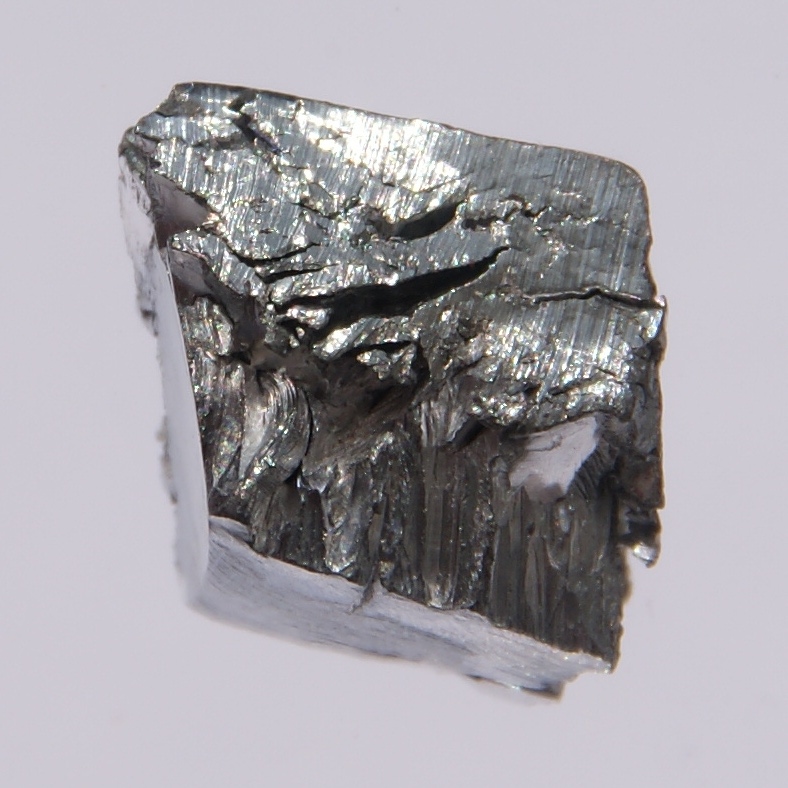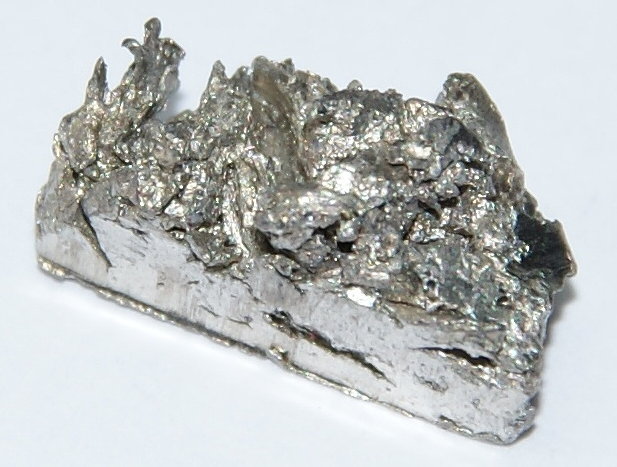Georges Urbain on:
[Wikipedia]
[Google]
[Amazon]
Georges Urbain (12 April 1872 – 5 November 1938) was a French chemist, a professor of the Sorbonne, a member of the Institut de France, and director of the Institute of Chemistry in Paris. Much of his work focused on the rare earths, isolating and separating elements such as
 Urbain led the laboratories of the Compagnie Générale d’Electricité from 1899 to 1904. Among the topics he studied was the use of rare earth oxides to manufacture
Urbain led the laboratories of the Compagnie Générale d’Electricité from 1899 to 1904. Among the topics he studied was the use of rare earth oxides to manufacture

 Urbain discovered the element lutetium (atomic number 71) independently in 1907 when he demonstrated that Jean Charles Galissard de Marignacs ytterbia contained two substances. Through spectral analysis of both, he was able to characterize them and prove that they were distinct elements.
Urbain called his two components "neoytterbia" and "lutecia".
These components of ytterbia were independently isolated around the same time by Austrian chemist Carl Auer von Welsbach and the American chemist Charles James. Urbain and Welsbach accused each other of publishing results based on the other party. The dispute was officially settled in 1909 by the Commission on Atomic Mass, which granted priority to Urbain as the first to describe the separation of lutetium from ytterbium. Urbain's "lutecia" was adapted to "lutetium". Urbain's name "neoytterbium" was temporarily adopted, but later Marignac's name was restored to the element
Urbain discovered the element lutetium (atomic number 71) independently in 1907 when he demonstrated that Jean Charles Galissard de Marignacs ytterbia contained two substances. Through spectral analysis of both, he was able to characterize them and prove that they were distinct elements.
Urbain called his two components "neoytterbia" and "lutecia".
These components of ytterbia were independently isolated around the same time by Austrian chemist Carl Auer von Welsbach and the American chemist Charles James. Urbain and Welsbach accused each other of publishing results based on the other party. The dispute was officially settled in 1909 by the Commission on Atomic Mass, which granted priority to Urbain as the first to describe the separation of lutetium from ytterbium. Urbain's "lutecia" was adapted to "lutetium". Urbain's name "neoytterbium" was temporarily adopted, but later Marignac's name was restored to the element  In 1911 Urbain isolated another new element which he called "celtium", but his studies were interrupted by
In 1911 Urbain isolated another new element which he called "celtium", but his studies were interrupted by
europium
Europium is a chemical element with the symbol Eu and atomic number 63. Europium is the most reactive lanthanide by far, having to be stored under an inert fluid to protect it from atmospheric oxygen or moisture. Europium is also the softest lanth ...
and gadolinium
Gadolinium is a chemical element with the symbol Gd and atomic number 64. Gadolinium is a silvery-white metal when oxidation is removed. It is only slightly malleable and is a ductile rare-earth element. Gadolinium reacts with atmospheric oxygen o ...
, and studying their spectra, their magnetic properties and their atomic masses. He discovered the element lutetium (atomic number 71). He also studied the efflorescence of saline hydrates.
Education
After attending theLycée Charlemagne
The Lycée Charlemagne is located in the Marais quarter of the 4th arrondissement of Paris, the capital city of France.
Constructed many centuries before it became a lycée, the building originally served as the home of the Order of the Jesu ...
and Lycée Lavoisier
In France, secondary education is in two stages:
* ''Collèges'' () cater for the first four years of secondary education from the ages of 11 to 15.
* ''Lycées'' () provide a three-year course of further secondary education for children betwee ...
, Urbain studied at the École supérieure de physique et de chimie industrielles de la ville de Paris
ESPCI Paris (officially the École supérieure de physique et de chimie industrielles de la Ville de Paris; ''The City of Paris Industrial Physics and Chemistry Higher Educational Institution'') is a prestigious grande école founded in 1882 by ...
(ESPCI ParisTech). He graduated as the top student in the school's ninth graduating class, in 1894. At that time he also earned his "licence ès physique et chimie" at the Sorbonne.
Urbain served in teaching positions at the Préparateur at the École de Physique et Chimie Industrielle (1894-1895), in Charles Friedel
Charles Friedel (; 12 March 1832 – 20 April 1899) was a French chemist and mineralogist.
Life
A native of Strasbourg, France, he was a student of Louis Pasteur at the Sorbonne. In 1876, he became a professor of chemistry and mineralogy at ...
s organic chemistry laboratory (1832-1899), in the Faculté des Science P.C.N. (1895-1898), and at the École Alsacienne
The École alsacienne is a co-educational private school located in the 6th arrondissement of Paris.
The school was founded by a group of French Alsatians after the French defeat in the Franco-Prussian War. It then became a model for reforming ...
(1897-1899).
He completed a thesis on ''Recherches sur la Séparation des Terres Rares'' (Research into the Separation of Rare Earth Elements) in 1899.
Career
 Urbain led the laboratories of the Compagnie Générale d’Electricité from 1899 to 1904. Among the topics he studied was the use of rare earth oxides to manufacture
Urbain led the laboratories of the Compagnie Générale d’Electricité from 1899 to 1904. Among the topics he studied was the use of rare earth oxides to manufacture arc lamp
An arc lamp or arc light is a lamp that produces light by an electric arc (also called a voltaic arc).
The carbon arc light, which consists of an arc between carbon electrodes in air, invented by Humphry Davy in the first decade of the 1800s, ...
s. Next he became a teacher at the École de Physique et Chimie (1905-1906) and the Sorbonne (1906, 1908). In 1907 Urbain joined the Commission Internationale des Poids Atomiques.
During World War I
World War I (28 July 1914 11 November 1918), often abbreviated as WWI, was List of wars and anthropogenic disasters by death toll, one of the deadliest global conflicts in history. Belligerents included much of Europe, the Russian Empire, ...
Urbain served in the Ministry of War as a laboratory director and technical advisor for artillery and explosives.
Following the war he taught at the École Centrale des Arts et Manufactures. In 1928 he accepted the chair of general chemistry at the Sorbonne, in addition to serving as Director of Chemistry at the Institute of Biologie. Urbain was also appointed head of the Chemistry Section of the Palais de la Découverte, director of the Chemical Treatment laboratory of Thiais, and president of the École Pratique des Hautes Etudes (2nd section).
Elements
Urbain developed new and more efficient techniques for the separation of rare earths. By taking advantage of the weights of rare earths, he was able to design procedures to separate light from heavy fractions, usingmagnesium
Magnesium is a chemical element with the symbol Mg and atomic number 12. It is a shiny gray metal having a low density, low melting point and high chemical reactivity. Like the other alkaline earth metals (group 2 of the periodic ...
and bismuth
Bismuth is a chemical element with the symbol Bi and atomic number 83. It is a post-transition metal and one of the pnictogens, with chemical properties resembling its lighter group 15 siblings arsenic and antimony. Elemental bismuth occurs ...
nitrates. This enabled him to test and refute a number of inaccurate rare earth "discoveries" claimed by other scientists.

 Urbain discovered the element lutetium (atomic number 71) independently in 1907 when he demonstrated that Jean Charles Galissard de Marignacs ytterbia contained two substances. Through spectral analysis of both, he was able to characterize them and prove that they were distinct elements.
Urbain called his two components "neoytterbia" and "lutecia".
These components of ytterbia were independently isolated around the same time by Austrian chemist Carl Auer von Welsbach and the American chemist Charles James. Urbain and Welsbach accused each other of publishing results based on the other party. The dispute was officially settled in 1909 by the Commission on Atomic Mass, which granted priority to Urbain as the first to describe the separation of lutetium from ytterbium. Urbain's "lutecia" was adapted to "lutetium". Urbain's name "neoytterbium" was temporarily adopted, but later Marignac's name was restored to the element
Urbain discovered the element lutetium (atomic number 71) independently in 1907 when he demonstrated that Jean Charles Galissard de Marignacs ytterbia contained two substances. Through spectral analysis of both, he was able to characterize them and prove that they were distinct elements.
Urbain called his two components "neoytterbia" and "lutecia".
These components of ytterbia were independently isolated around the same time by Austrian chemist Carl Auer von Welsbach and the American chemist Charles James. Urbain and Welsbach accused each other of publishing results based on the other party. The dispute was officially settled in 1909 by the Commission on Atomic Mass, which granted priority to Urbain as the first to describe the separation of lutetium from ytterbium. Urbain's "lutecia" was adapted to "lutetium". Urbain's name "neoytterbium" was temporarily adopted, but later Marignac's name was restored to the element ytterbium
Ytterbium is a chemical element with the symbol Yb and atomic number 70. It is a metal, the fourteenth and penultimate element in the lanthanide series, which is the basis of the relative stability of its +2 oxidation state. However, like the othe ...
.
 In 1911 Urbain isolated another new element which he called "celtium", but his studies were interrupted by
In 1911 Urbain isolated another new element which he called "celtium", but his studies were interrupted by World War I
World War I (28 July 1914 11 November 1918), often abbreviated as WWI, was List of wars and anthropogenic disasters by death toll, one of the deadliest global conflicts in history. Belligerents included much of Europe, the Russian Empire, ...
. In 1922, he announced his new element, fully characterizing its emission spectrum, but mistakenly identifying it as a rare earth. George de Hevesy and Dirk Coster also characterized it, placing it more accurately, and called it "hafnium". A decades-long controversy over credit and naming was eventually decided in favor of hafnium
Hafnium is a chemical element with the symbol Hf and atomic number 72. A lustrous, silvery gray, tetravalent transition metal, hafnium chemically resembles zirconium and is found in many zirconium minerals. Its existence was predicted by D ...
. Although Urbain was right in detecting the presence of a new element, the spectra and the chemical behavior he described were not a good match to the element later isolated. In part, the controversy resulted from the different techniques used by chemists like Urbain, who favored chemical reduction techniques, and physicists who increasingly relied on new X-ray spectroscopy methods.
As of 1919, Urbain had completed an extensive study of phosphorescence spectra, and demonstrated that trace impurities could dramatically alter results. By introducing impurities into artificially prepared mixtures, he was able to duplicate the results reported by other researchers, again testing claims about possible new elements.
Urbain was also a composer and sculptor.
References
Additional Sources
* 1872 births 1938 deaths ESPCI Paris alumni 20th-century French chemists Discoverers of chemical elements Commandeurs of the Légion d'honneur Members of the French Academy of Sciences Corresponding Members of the USSR Academy of Sciences Foreign Members of the USSR Academy of Sciences 19th-century French chemists Lutetium Rare earth scientists {{france-chemist-stub